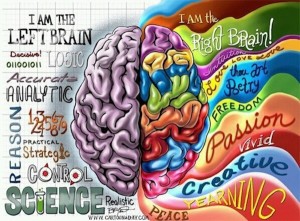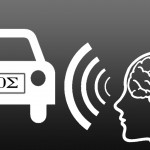Left Brain vs. Right: It’s a Myth, Research Finds
It’s the foundation of myriad personality assessment tests, self-motivation books and team-building exercises – and it’s all bunk.
Popular culture would have you believe that logical, methodical and analytical people are left-brain dominant, while the creative and artistic types are right-brain dominant. Trouble is, science never really supported this notion.
Now, scientists at the University of Utah have debunked the myth with an analysis of more than 1,000 brains. They found no evidence that people preferentially use their left or right brain. All of the study participants — and no doubt the scientists — were using their entire brain equally, throughout the course of the experiment.
A paper describing this study appeared in August in the journal PLOS ONE. [10 Things You Didn’t Know About the Brain]
The preference to use one brain region more than others for certain functions, which scientists call lateralization, is indeed real, said lead author Dr. Jeff Anderson, director of the fMRI Neurosurgical Mapping Service at the University of Utah. For example, speech emanates from the left side of the brain for most right-handed people. This does not imply, though, that great writers or speakers use their left side of the brain more than the right, or that one side is richer in neurons.
There is a misconception that everything to do with being analytical is confined to one side of the brain, and everything to do with being creative is confined to the opposite side, Anderson said. In fact, it is the connections among all brain regions that enable humans to engage in both creativity and analytical thinking.
“It is not the case that the left hemisphere is associated with logic or reasoning more than the right,” Anderson told LiveScience. “Also, creativity is no more processed in the right hemisphere than the left.”
Anderson’s team examined brain scans of participants ages 7 to 29 while they were resting. They looked at activity in 7,000 brain regions, and examined neural connections within and between these regions. Although they saw pockets of heavy neural traffic in certain key regions, on average, both sides of the brain were essentially equal in their neural networks and connectivity.
“We just don’t see patterns where the whole left-brain network is more connected, or the whole right-brain network is more connected in some people,” said Jared Nielsen, a graduate student and first author on the new study.
The myth of people being either “left-brained” or “right-brained” might have arisen from the Nobel Prize-winning research of Roger Sperry, which was done in the 1960s. Sperry studied patients with epilepsy, who were treated with a surgical procedure that cut the brain along a structure called the corpus callosum. Because the corpus callosum connects the two hemispheres of the brain, the left and right sides of these patients’ brains could no longer communicate.
Sperry and other researchers, through a series of clever studies, determined which parts, or sides, of the brain were involved in language, math, drawing and other functions in these patients. But then popular-level psychology enthusiasts ran with this idea, creating the notion that personalities and other human attributes are determined by having one side of the brain dominate the other.
The neuroscience community never bought into this notion, Anderson said, and now we have evidence from more than 1,000 brain scans showing absolutely no signs of left or right dominance.
Anderson said he wasn’t out to do some myth busting. His team’s goal is to better understand brain lateralization to treat conditions such as Down syndrome, autism or schizophrenia, where the left and right hemispheres have atypical roles.
So, should you trash your app that tries to determine if you are a left-brain or right-brain thinker? Both sides of your brain, as well as neuroscientists, say yes.


